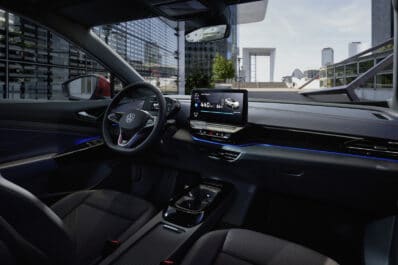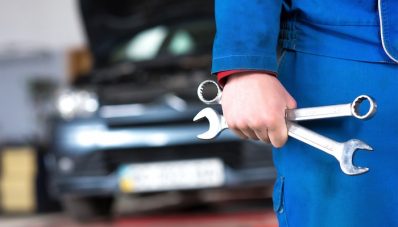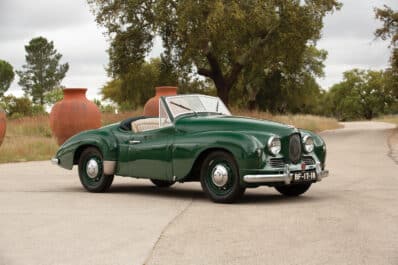
Lordstown Motors officials went on the offensive Wednesday afternoon, aiming to dispel mounting doubts about the EV startup’s future in light of a damning research report questioning whether it has received any real orders – while suggesting its founder and CEO is a “con man.”
Lordstown is one of numerous manufacturers getting ready to launch battery-powered pickups. The company completed a SPAC merger last year generating $675 million in cash, money it is using to finish development of its new Endurance model. Lordstown officials claim they’ve received more than 100,000 non-binding production reservations from commercial fleet users. But that’s been thrown in doubt as a result of a report published last week by short-seller Hindenburg Research.
After issuing a terse response early this week declaring that work on the electric truck is “on track” for a September 2021 launch, Chairman and CEO Steve Burns acknowledged that the company is “cooperating” with an inquiry by the SEC. Lordstown also has launched its own internal investigation, Burns revealed, though he declined to comment directly on the Hindenberg study.
Burns talks sales numbers

That said, Burns did provide some insight into its sales expectations. With the first of a planned 57 beta-test vehicles now being readied, “We are able to obtain more substantial levels of commitment from our prospective customers,” he said, adding
“Under these arrangements the fleet management companies agreed to use reasonable effort to obtain purchase commitments from their clients.” But those commitments will be “conditional” until Lordstown actually puts trucks into production, Burns cautioned.
There’s still a problem with the math, 20,000 “conditional” orders significantly lower than the 100,000 non-binding reservations Lordstown previously quoted.
Company officials suggested that limited manpower means it will take time to firm things up. A clearer number will emerge “over the next 60 to 90 days,” said Lordstown President Rich Schmidt.
Nonetheless, the company is confident enough in its prospects, the Lordstown founder said, it is preparing to increase the Ohio factory’s capacity to 60,000 vehicles a year. And it is speeding up development of a second product program, an all-electric RV-style van set to reach production by the second half of 2022, said Schmidt.
A confident front

While Lordstown officials aimed to project confidence during a Wednesday afternoon earnings call with analysts and reporters, there is no question company officials need to be worried about the report issued by Hindenberg, said Sam Abuelsamid, principal automotive analyst with Guidehouse Insights.
“They’re absolutely facing the fight of their life, no doubt about it,” said Abuelsamid. “I’ve always been dubious about the number of orders they claim considering they’ve never built a product before. They’re going to have to provide real evidence of what they actually have … and they need to demonstrate an actual product.”
Lordstown was founded in 2018 by Steve Burns, a pioneer in the electric vehicle space who previously ran startups AMP and Workhorse. Its sole product is the Endurance, an all-electric pickup that it is primarily targeting at the commercial fleet market. The truck takes the unusual approach of using four motors, one mounted in each wheel hub. It is expected to produce 600 horsepower, deliver 250 miles of range and tow up to 6,000 pounds.
The nascent EV maker caught a lucky break two years ago when General Motors decided to sell it one of the three North American assembly plants it was planning to close. GM loaned the fledgling company $40 million to get the deal completed and eventually invested $75 million in the startup.

Even before rolling out a running prototype, Lordstown began touting advance reservations for Endurance, something that drew the interest of investors as the company prepared to enter a SPAC, or special purpose acquisition company, reverse merger last year. The deal not only got Lordstown listed on the Nasdaq exchange – trading as RIDE – but also generated about $675 million in new equity.
Hindenburg report casts doubt
But Hindenburg Research decided to address some of the questions that Abuelsamid and other industry observers had quietly been discussing among themselves. And the report it released last week went off like a bombshell. Where Lordstown stock surged to a high of $31.80 after its SPAC deal, it fell to as low as $9.80 after the report’s release, shares closing at $15.09 as the bell sounded Wednesday. The price dropped into the $14.40 range in after-hours trading.
“Lordstown is an electric vehicle SPAC with no revenue and no sellable product, which we believe has misled investors on both its demand and production capabilities,” Hindenburg said, while referring to Lordstown founder and CEO Steve Burns as a “con man.”
It zeroed in on several supposedly large orders for the Endurance, including one supposedly for 14,000 of the trucks worth $735 million supposedly placed by E Squared Energy. But Hindenburg claims the firm is a two-man operation, based out of a “small apartment in Texas,” which has no vehicle fleet.

“Another 1,000-truck, $52.5 million order comes from a 2-person startup that operates out of a Regus virtual office with a mailing address at a UPS Store,” reported Hindenburg. “We spoke with the owner who acknowledged it won’t actually order any vehicles, instead describing the ‘pre-order’ as a mere marketing relationship.”
Hindenberg’s lengthy analysis was particular harsh on Burns. It cited unnamed current and former Lordstown employees who, among other things, likened Burns to P.T. Barnum, the legendary circus owner and huckster.
During the Wednesday afternoon call, however, Burns and other Lordstown officials went to great pains to provide all the minutiae industry analysts sought during the company’s earnings call.
What we learned

The key takeaways: Lordstown is completing development of the Endurance and moving ahead on its second product line. The company lost $38 million during the fourth quarter of 2020 and $101 million for the full year. Largely due to the SPAC deal, the startup ended 2020 with $630 million in cash. It expects to end 2021 with just $200 million in the bank due to the heavy spending associated with the Endurance launch and the van project.
Whether Wednesday’s call will put Lordstown on firm ground is uncertain. What’s clear is that Hindenburg has something of a track record knocking down incipient EV companies.
Last February, the research firm gained headlines targeting Phoenix-based Nikola Corp. Like Lordstown, Nikola focuses on the commercial market and used a SPAC deal to go public. Nikola then saw a big runup in its share price while also lining up a proposed alliance with General Motors.
Hindenburg revealed a number of false or misleading statements by Nikola and its founder and now former chairman Trevor Milton – later backed up by the company’s own, internal review. As a result, Nikola’s share price collapsed and the deal with GM was sharply pared back. Milton was subsequently forced to resign when additional information about inappropriate behavior involving minors was revealed.
Now it’s Lordstown’s time in the crosshairs. The company will have to demonstrate that that is real substance behind both its truck and its business plan if it expects to survive, said analyst Abuelsamid.








Now check out the Fisker. I’m told underneath it is an I-pace.best I can tell the only one that has a chance is Rivian
Tracey, the original prototype shown at the 2020 CES had the underlying chassis of a VW ID.4 (the MEB platform that VW will use for dozens of products). Henrik Fisker made no bones about that. He decided that it made more economic sense to focus on the design and tech v platform with an EV. Since then, Fisker jumped to the platform Magna is developing. See the link, below. Magna’s strategy is to line up multiple EV start-ups sharing that platform with everything else unique. Production of the Ocean is set to launch at the Magna-Steyr plant in Graz, Austria, where Magna produces low-volume niche products for manufacturers like Mercedes. It MAY add a North American plant if demand warrants. Meanwhile, Foxconn, the Chinese contract manufacturer producing iPhones, is looking to do the same thing. It has even begun looking at possible U.S. manufacturing sites. The strategy is intriguing and, in Fisker’s case, obviates the need to build a $1 billion plant. Now, as to whether Fisker – or other start-ups – will make it, that’s aother discussion entirely.
https://www.thedetroitbureau.com/2020/10/fisker-and-magna-lock-down-manufacturing-and-investment-deal/
Paul A. Eisenstein
Con men are coming out of the woodwork claiming they are the next Tesla. Fortunately, there are still people who INVESTIGATE, not merely repeat the press releases (like The Detroit Bureau, apparently). I’ve been critical of TDB over the years for falling for this BS they are told without a bit of evidence any of it is true. As if anyone with a name and a workshop can build a vehicle that can drive even 50 miles without an issue. It took Tesla quite a long time to get the bugs worked out, and it’s still a work in progress.
The Nikola report by Hindenburg should have embarrassed every reporter out there who ate up their BS. I saw Trevor Milton on a popular auto (line) podcast a few months back and said to myself, “What a line of BS, why isn’t he being challenged by these auto ‘experts’?”
Anyone with two cents worth of common sense should know that just replacing an ICE with an electric platform doesn’t mean anyone can build a quality vehicle. Just look at the recalls coming from established OEMs (who have systems in place to prevent issues). What does Lordstown or Nikola or (insert latest future star) know about designing and manufacturing a vehicle in comparison?
Paul I suggest you learn to investigate rather than just parrot.
Double dittos for autonomous vehicles. Mark my words, “It ain’t gonna happen.” Just because some pimple faced teenager was able to hack into a Playstation doesn’t mean he can build a 2 ton vehicle that can drive I-94.
LMFAO, Jim. Easy for you to tell me I should investigate. We have done investigative reports on a number of stories and a number of manufacturers. See the piece I personally wrote the other day on Tesla. Joe Szczesny has a good look at GM safety going up today.
There is a limit to resources available and jumping in to do investigations on everything just isn’t possible — nor realistic. A company like Hindenburg, a short-seller, has millions, potentially billions, of dollars riding on what happens to a company they are shorting, so they can afford to have a single piece that may take months to put out. Or perhaps you think we can follow their model? Hmm, one report February 2020, another March 2021. In fact, we’ve done numerous deep dives since then. Meanwhile, how many media add the perspective we do? It’s typically become a world of short stories with no history or perspective.
In the real world, a mix of immediate reportage, features with more background and depth and then investigative reports is what we’ll deliver. And with a team a fraction of the size of virtually any other auto news outlet, I am quite proud of what we deliver.
BTW, I absolutely expect some of the start-ups to succeed. Some others will fall hard. As to autonomous? I expect there to see Level 3 tech within 2-3 years. Beyond that?
Paul A. Eisenstein